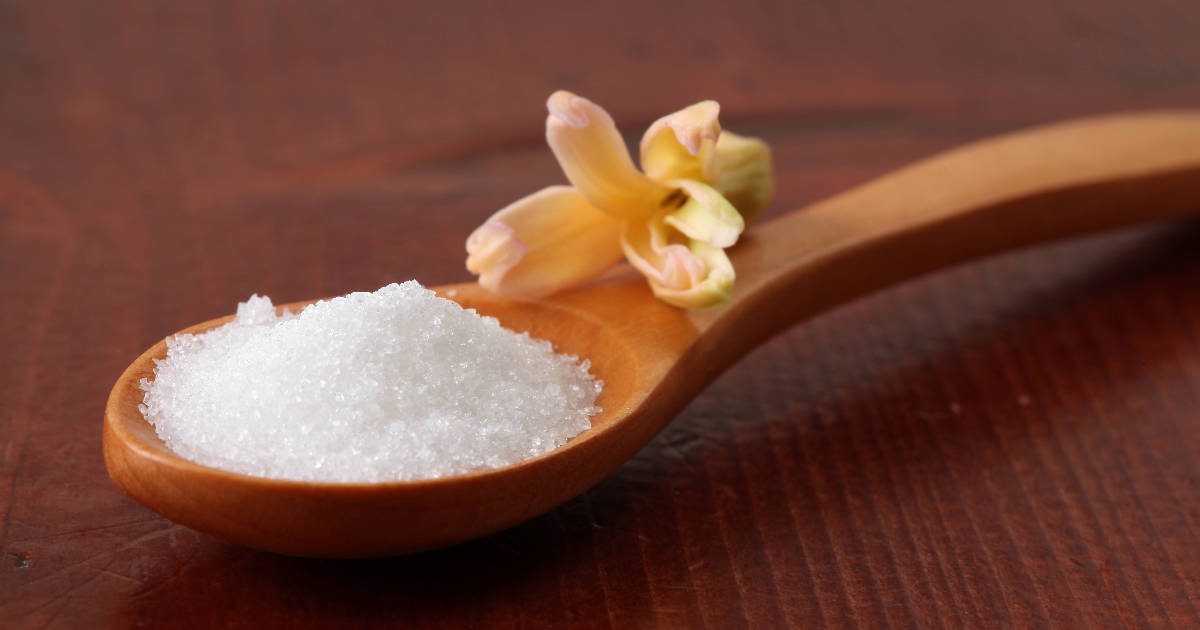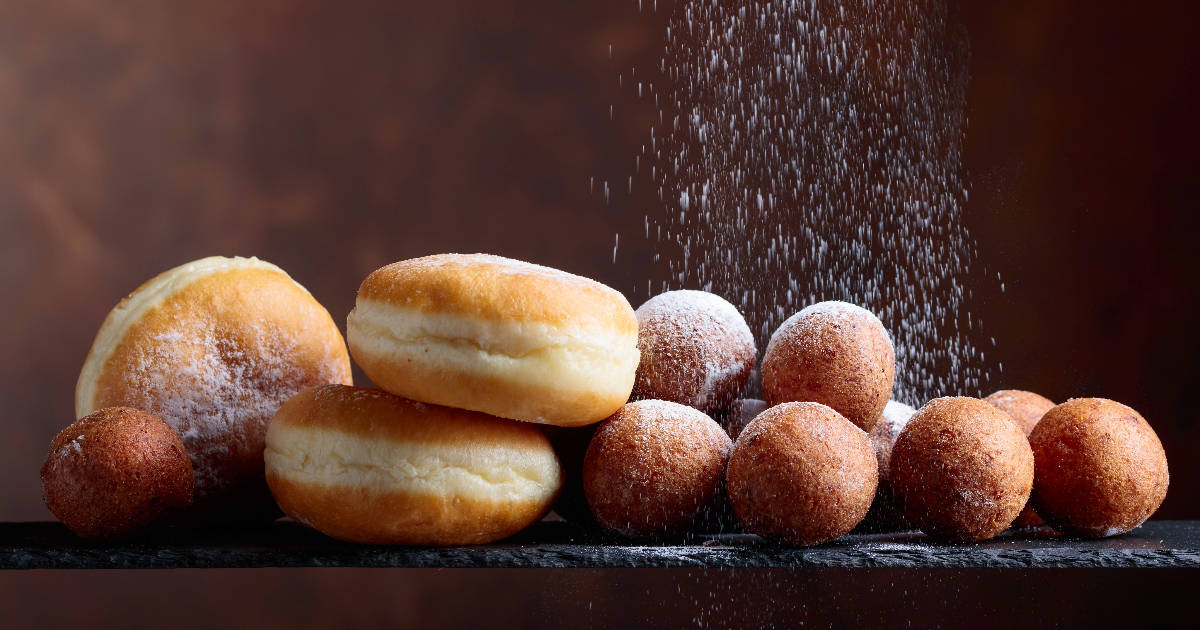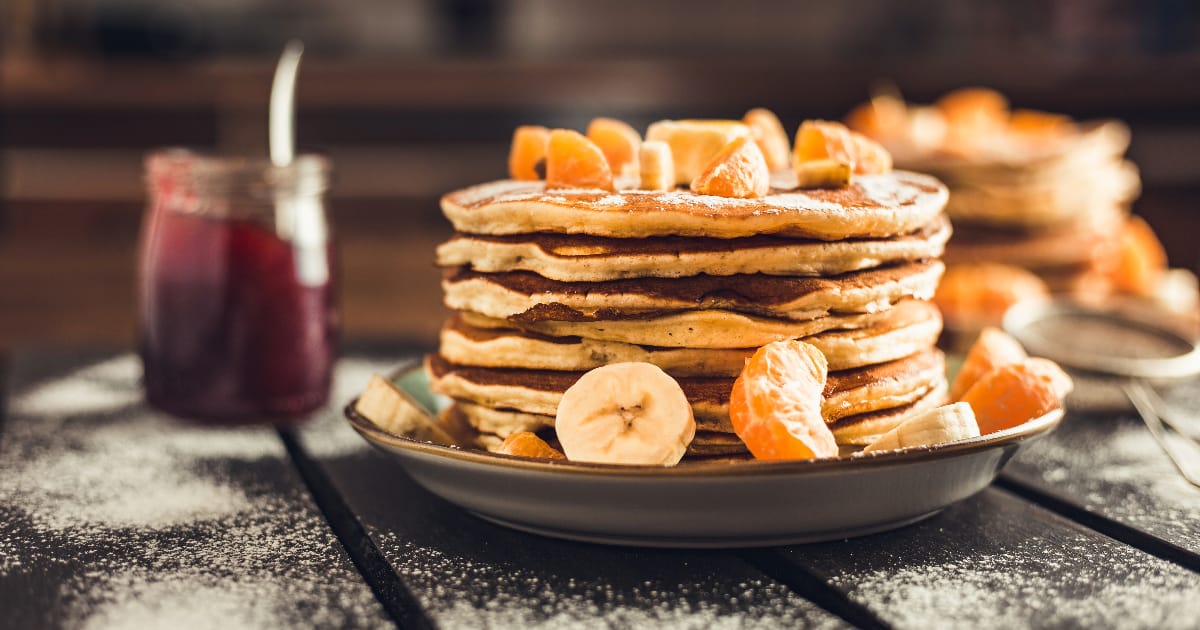Sugar is a staple ingredient in baking and makes desserts deliciously sweet. However, there are many different types of sugar to choose from. Two of the most common varieties are powdered sugar and caster sugar. But what is the difference, and when should you use each one?

We will explain everything you need to know about powdered and caster sugar, from what they are to when and how to use them. We'll also provide substitutes in case you don't have the right sugar on hand.
What Is Powdered Sugar?
Also known as confectioners' sugar or icing sugar, powdered sugar is a finely ground sugar with a light and fluffy texture. To make it, sugar crystals are thoroughly milled into a smooth powder. A small amount of cornstarch is also added, usually around 3-5%. This helps prevent clumping and makes it easier to blend powdered sugar smoothly into recipes.
Powdered sugar comes in varying degrees of fineness, categorized by "X's." Common types include:
- 10X - The finest powdered sugar you can buy. It almost looks like dust.
- 6X - A medium grind with a grainier texture than 10X. This is the most widely available.
- 4X - The coarsest powdered sugar, with a sandy consistency.
The more X's, the smoother the powdered sugar will be. However, even 4X blends well into frosting and glazes.
Key Takeaway: Powdered sugar is made by finely grinding granulated sugar into a smooth powder. It contains a small amount of cornstarch to prevent caking.
What Is Caster Sugar?
Caster sugar, also called castor sugar or superfine sugar, has a texture between granulated sugar and powdered sugar. While not as finely ground as powdered sugar, it is more finely granulated than regular white sugar. This allows it to dissolve rapidly into batters and liquids.
Caster sugar comes in two main varieties:
- White caster sugar - Made from refined white sugar. It has no added molasses.
- Golden caster sugar - Made from less-refined sugar that retains some molasses content. It has a warm, buttery, caramel-like flavor.
Golden caster sugar can typically be substituted 1:1 for light brown sugar. It will add similar moisture and flavor depth.
Key Takeaway: Caster sugar is more finely ground than regular granulated sugar but coarser than powdered sugar. It dissolves quickly when baking.
Powdered Sugar vs. Caster Sugar
Now that you know the basics of each sugar, let's directly compare powdered and caster sugar:
- Fineness - Powdered sugar is much finer than caster sugar. It has an ultra-fine, flour-like consistency compared to the coarser grains of caster sugar.
- Dissolving Ability - Because it is finer, powdered sugar generally dissolves faster in liquids. However, caster sugar also dissolves rapidly.
- Added Starch - Powdered sugar contains 3-5% cornstarch. Caster sugar does not contain any starch.
- Uses - Powdered sugar is ideal for frostings and icings. Caster sugar is preferred for meringues and delicate cakes where you want sugar to incorporate quickly. Both work for general baking.
- Flavor - White powdered sugar and white caster sugar have a neutral flavor. Golden caster sugar has a caramel-like taste.
Keep these differences in mind when deciding which sugar to use in a recipe.
When to Use Powdered Sugar

Powdered sugar is ideal in any recipe where you want a smooth texture and stability. With its fine grind and added cornstarch, it blends seamlessly into frostings, glazes, and candy recipes.
Here are common uses for powdered sugar:
Icings and Frostings
Powdered sugar is perfect for preparing creamy icings and frostings. It dissolves easily into butter, cream cheese, or milk to create smooth, spreadable toppings and fillings. Frostings made with granulated sugar would have a gritty, grainy texture.
Recipes like buttercream, cream cheese frosting, glaze icing, and royal icing all rely on powdered sugar. It provides an airy, creamy texture that holds its shape well on cakes and cupcakes. The sugar also hardens as it dries, helping frosting set up firm.
Glazes
Thin icings and glazes depend on powdered sugar for their glossy sheen. Mix powdered sugar with milk or juice, and you'll get a smooth, translucent glaze that can be drizzled over doughnuts, cookies, and pastries.
Powdered sugar dissolves rapidly into liquids, allowing you to make glazes quickly and easily. It also helps give the glaze a thick, coating texture.
Dusting Desserts
A light dusting of powdered sugar over baked goods adds both visual appeal and sweetness. Powdered sugar's ultra-fine texture allows it to sift smoothly and evenly over the surface with no risk of clumps.
It's common to finish pie crusts, sugar cookies, cinnamon rolls, and other desserts with a pretty powdered sugar coating.
When to Use Caster Sugar

While powdered sugar shines in frostings and glazes, caster sugar is the choice for delicate baked goods where you want sugar to dissolve rapidly. Its fine crystals incorporate quicker than regular granulated sugar.
Here are cases where caster sugar is preferred:
Meringues
Meringues are made by whipping egg whites with sugar until light, fluffy, and glossy. For the meringue to reach optimal volume and stability, the sugar must dissolve completely and without overmixing the eggs.
Caster sugar is ideal here. Its fine grains dissolve almost instantly into the whipped egg whites. Granulated sugar would take longer to melt and could result in a grainy, stiff meringue.
Sponge Cakes
Sponge cakes get their tender crumb from whipped eggs. Using caster sugar ensures it dissolves smoothly into the egg mixture without deflating the air bubbles. This allows the cake to rise into a perfect dome shape.
Granulated sugar takes longer to melt and may not fully incorporate before baking. This can cause the sponge to sink or develop air pockets.
Mousses and Soufflés
When making airy desserts like mousse and soufflé, it's vital for sugar to melt rapidly into egg yolks without curdling them. The fine crystals of caster sugar allow it to dissolve at a lower temperature and prevent the yolks from becoming grainy.
Simple Syrups
Simple syrup is made by dissolving sugar into boiling water, and then cooling the mixture. Bartenders often use simple syrup to sweeten cocktails and drinks. Caster sugar is ideal here, as it quickly dissolves into the liquid without requiring excessive stirring.
Granulated sugar would take longer to melt and could settle at the bottom of the glass. When sweetening beverages, always opt for caster or superfine over regular sugar.
Key Takeaway: Use caster sugar when you need sugar to dissolve quickly and smoothly, like in meringues, syrups, and delicate cakes.
| Sugar Type | Description |
|---|---|
| Powdered Sugar | Ultra fine, floury texture |
| Contains 3-5% cornstarch | |
| Best for frosting, icing, dusting | |
| Caster Sugar | Finer than granulated, coarser than powdered |
| No cornstarch | |
| Best for meringues, syrups, sponge cakes |
Caster Sugar vs. Granulated Sugar
Since caster and granulated sugar are both simple white sugars, you may wonder whether they can be used interchangeably.
In most recipes, they can substitute for each other at a 1:1 ratio without issue. However, the different crystal sizes can impact the final texture.
Here are some tips when substituting caster and granulated sugar:
- For delicate cakes, meringues, and mousses, use caster sugar if possible. Granulated sugar may not fully melt and incorporate.
- When creaming butter and sugar for cookies or cake, use chilled butter and beat longer if substituting granulated for caster sugar. This allows the coarser crystals extra time to dissolve.
- For simple syrups and sweetening drinks, use caster or superfine sugar if available. Otherwise, stir granulated sugar until fully dissolved.
- Granulated sugar may give baked goods a slightly speckled appearance as the larger crystals don't fully melt.
So while you can often swap caster and granulated sugar, caster sugar is the best choice in recipes where complete melting is critical.
How to Make Caster Sugar
Don't have any caster sugar for your recipe? You can easily make a substitute at home with regular granulated sugar.
There are a couple of methods:
Food processor or blender - Add 1 cup granulated sugar and pulse 3-4 times until the sugar is finely ground. Be careful not to overprocess to powdered sugar consistency.
Spice grinder - Add approximately 1/4 cup sugar and pulse briefly into a fine powder. Work in small batches if needed to get the perfect grind.
Let the homemade caster sugar rest for a few minutes before opening your grinder or blender. This prevents a puff of sugar dust when you remove the lid. Then use the sugar immediately as you would store-bought caster sugar.
Caster Sugar Substitutes
If you don't have time to blitz sugar into a finer grind, don't worry. Here are some handy ingredient swaps:
- Granulated sugar - Use normal white sugar. Beat/mix for longer and expect a possible speckled texture.
- Superfine sugar - This is essentially the same as caster sugar and substitutes 1:1.
- Raw sugar - Coarser than caster but has a similar golden color and flavor. Grind first if possible.
- Brown sugar - Adds moisture which may affect texture. Only use in place of golden caster sugar.
- Powdered sugar - Too fine and powdery to substitute in baking. May work for sweetening drinks.
With a few simple substitutions, you can mimic caster sugar in just about any recipe.
Powdered Sugar Substitutes
While powdered sugar is harder to replicate at home, there are still options if you're out of it:
- Granulated sugar + cornstarch - For every 1 cup sugar, add 1-2 tsp cornstarch. Blend into a powder.
- Granulated sugar - Works in a pinch but frosting may be grainy.
- Confectioner's blend - Premade blend of sugar and cornstarch. Found with specialty baking items.
- Caster sugar - Too coarse to substitute in frostings but may work for dusting.
If possible, try to keep powdered sugar on hand for baking. The added cornstarch makes a big difference in achieving smooth, lump-free icings and glazes. But you can still whip up a quick DIY version.
FAQ
Can I use powdered sugar instead of caster sugar?
No, you should not substitute powdered sugar for caster sugar in recipes. Powdered sugar contains cornstarch, which affects the texture and rising of delicate baked goods. Its fine powder would also not provide the right level of sweetness compared to larger caster sugar crystals.
Is caster sugar the same as granulated sugar?
Caster sugar and granulated sugar both come from sugar cane. However, caster sugar is more finely ground which allows it to dissolve more rapidly during baking. While you can often substitute one for the other, caster sugar is preferred when complete melting is essential.
What is golden caster sugar?
Golden caster sugar is a less refined version of white caster sugar. It has a warm, butterscotch-like flavor and brown color from retained molasses content. Use it when you want a hint of caramel taste.
Can I make powdered sugar at home?
Yes, you can make a powdered sugar substitute by grinding granulated sugar into a fine powder in a blender or food processor. For every 1 cup of sugar, add 1-2 teaspoons of cornstarch to prevent clumping. Simply blend until smooth and powdery.
Is caster sugar necessary or can I always use granulated?
You can substitute granulated for caster sugar in most recipes. However, caster sugar is specially ground to dissolve faster during baking. Using it when making meringues, syrups, and delicate cakes can prevent graininess. Consider keeping caster sugar on hand if you frequently make these recipes.
Conclusion
While they may look similar in the pantry, powdered and caster sugar are very different when it comes to baking. Now that you know how each one is made, their key distinctions, and their ideal uses, you can decide when to use powdered or caster sugar.
Powdered sugar is perfect for smooth, stable frostings and glazes. Caster sugar should be your go-to for recipes where rapid melting is essential. And in a pinch, you can make easy homemade versions of both.
Understanding how to correctly use powdered, caster, and other sugars will give you the sweet skills to take your desserts to the next level. So don't be afraid to put your sugar knowledge to the test in all kinds of new recipes.
Key Takeaway: Powdered sugar is ideal for frosting and dusting while caster sugar is preferable for delicate baked goods and beverages. Both can be easily substituted if needed.

